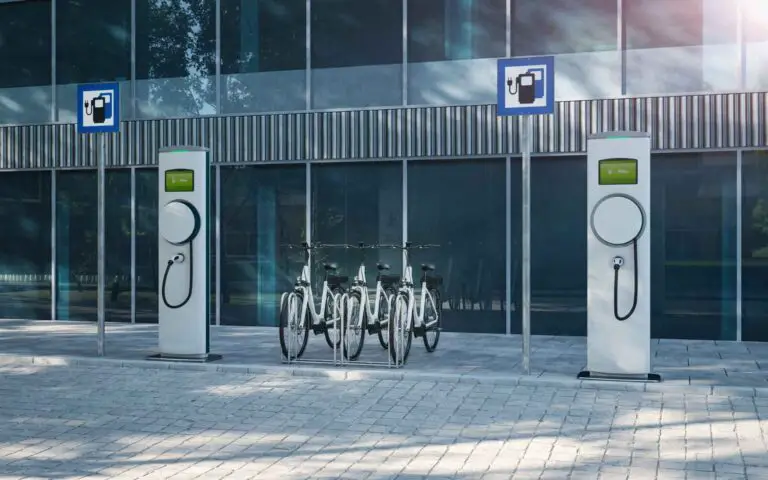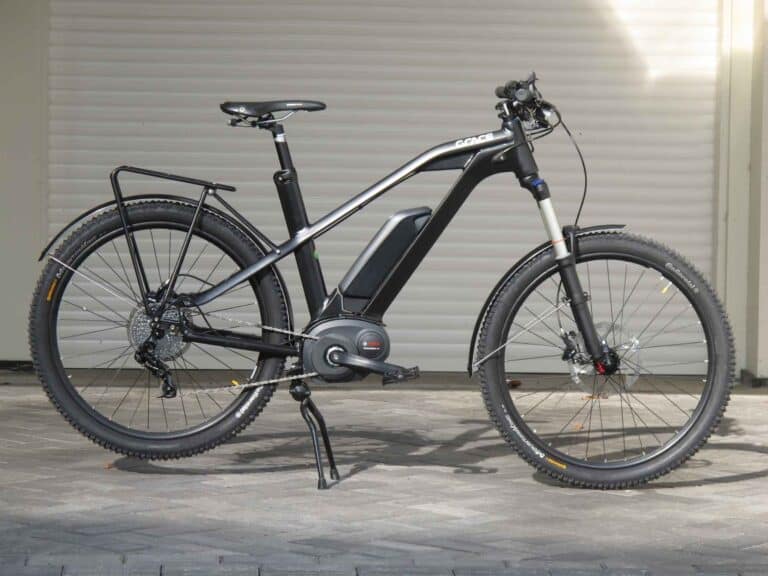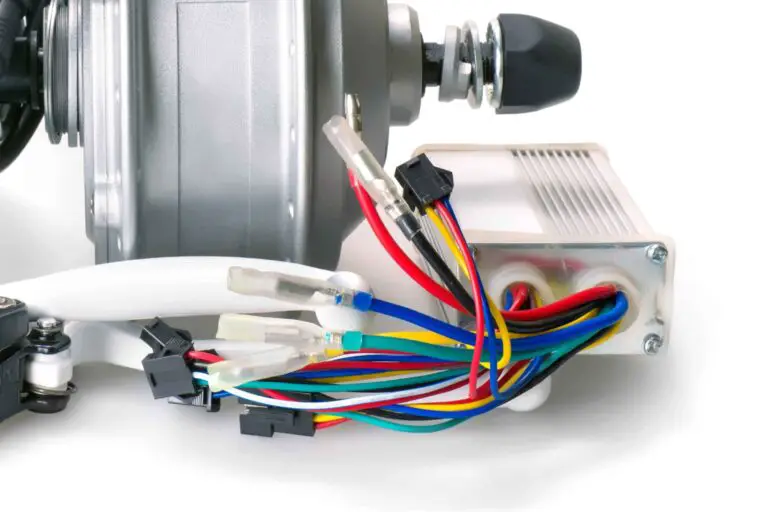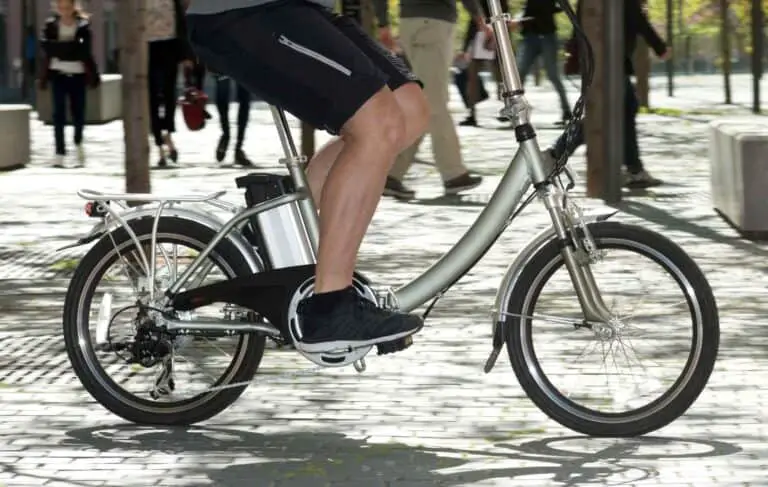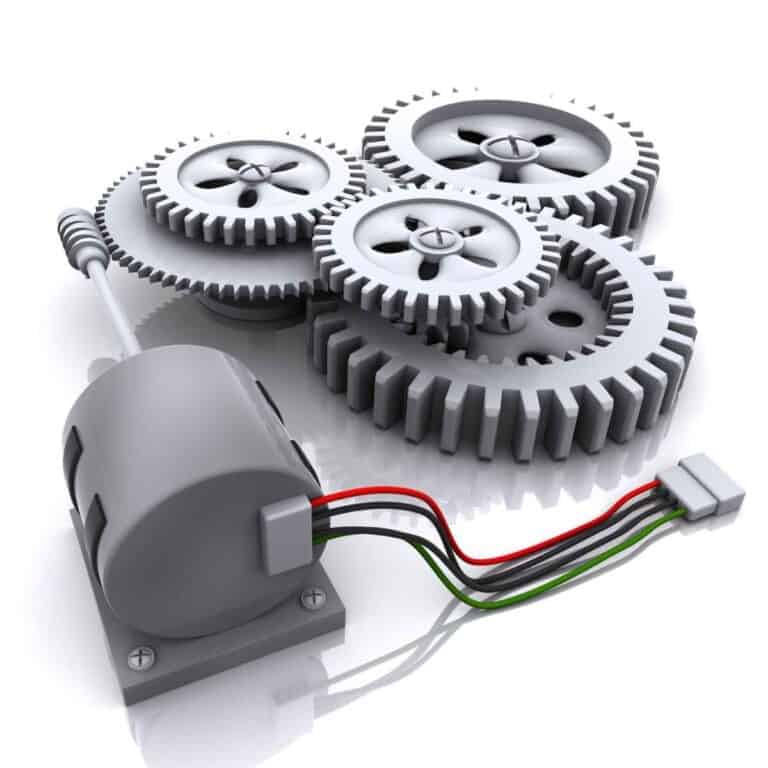E-bike Battery Problems (A Fix That Actually Works)
I had eBike battery problems the last few times I took my electric bike out for a ride. I did not know what was causing this issue, so I did some research on how to troubleshoot eBike battery problems. I compiled a list of the most common electric bike battery problems riders have with their eBike batteries, how to troubleshoot these issues, and how to repair your eBike’s battery.
- eBike battery not charging
- What to do if your eBike battery does not last long
- Your eBike is not turning on
- eBike battery pack is swelling
- If your eBike battery is not holding a charge
- eBike battery gives inconsistent ride times
- When your eBike shuts off when pressing the throttle (powering motor)
- If your eBike battery falsely shows it is fully charged
1. eBike Battery Not Charging
On average, if your eBike battery is not charging, either your battery or your charger is faulty. You may have been sent a bad battery or charger. Or, it may be time to replace your battery, especially if you have had your battery for at least three years.
It can be extremely frustrating to plan your day around using your eBike, just to discover it did not charge when you plugged it in. It is important to double-check your power source before troubleshooting any issues with your battery. Make sure electricity is running to the outlet you have your battery charging on. We recommend plugging another device into your outlet to verify it is not actually your outlet that is not working.
You may also want to double-check to make sure your battery charger is fully plugged into the outlet.
If your eBike battery is not charging, this malfunction could be caused by:
- Faulty charger
- Faulty battery
eBike Battery Not Charging Due To Faulty Charger
If your eBike battery is not charging, you may have a faulty charger. If you just received your eBike new from the manufacturer, it is possible they accidentally packed a faulty charger into your package.
Try contacting your e-bike’s manufacturer to rectify this issue. In most cases, they should have no problem sending you a new charger. Even if you later discover your issue is not with the charger, now you will have a spare!
If you have had your eBike for a while, it may just be time to replace your charging cord.
If you plug your charger in and the charging light does not come on, it is probably damaged. If you plug in your charger and the light does come on, your charger could still be the root cause of your issue, but you will have to take additional steps to diagnose this.
If you cannot get the manufacturer to send you another charger, or if you are unsure if your charger is the root issue, we recommend purchasing a multimeter and using it to test the voltage of your battery charger.
A multimeter will come in handy whenever you have an issue with your battery, as it is a very user-friendly tool for troubleshooting battery problems. Essentially, if the multimeter displays a reading of a lower voltage than is noted on the device you test, the device is likely faulty. We recommend purchasing this Plusivo multimeter from Amazon.
eBike Battery Not Charging Due To Faulty Battery
If your eBike battery is not charging and you already used the multimeter to rule out a faulty charger, you may have a faulty battery. If you just received your eBike new from the manufacturer, it is possible they accidentally sent you a faulty battery. If your eBike is new or its battery is still within its warranty (check the manufacturer’s website), contact the manufacturer’s customer service via email or phone. They should be able to rectify this issue for you.
If your eBike battery is not within it’s warranty or has been used consistently for three or more years, it may be time to replace your battery. Most eBike batteries last for about three years. If you want to learn more about the average lifespan of an eBike battery check out our article, “How Long Electric Bike Battery Last [Lifespan, Per Charge].”
If your eBike is outside its warranty but is not quite three years old, we recommend checking its voltage with a multimeter. If your multimeter displays the same voltage that is noted on your battery, it is unlikely your battery is the root of your issue. If the voltage reading is lower than what is noted on your battery, you have a faulty battery.
You may have a malfunctioning cell or cell group within the battery, a faulty connector, a faulty battery management system, or a faulty battery. Once you find the root issue is the battery, we recommend taking it to a mechanic so they can diagnose your issue.
You don’t want to replace your entire battery until it is absolutely necessary, as it is a pricey component. If you would like to learn more about how much electric bike batteries cost, check out our article, “Electric Bike Battery Cost (A Helpful Chart).”
It is much more cost-effective to replace a few connectors if that is the cause of your battery failing to charge.
2. What to Do if Your eBike Battery Does Not Last Long
In general, if your eBike battery dies within an hour of use it may be indicative of a problem with the BMS, a battery cell, or an issue with another part, like the throttle or the motor. If your eBike battery does not last for very long you will likely need to troubleshoot what is causing the issue.
The most common cause of a discharge issue, or the battery draining too quickly, is an issue within the BMS. The BMS, or the battery management system, is responsible for keeping all the battery cells running at a balanced rate and for regulating the temperature of your battery.
We do not recommend trying to fix a BMS yourself, as disassembling a BMS can pose a serious risk of electrocution to an untrained person. We recommend taking your battery to a mechanic and asking them to diagnose and treat this issue by checking and possibly replacing the BMS.
If there is nothing wrong with the BMS, we recommend taking your eBike to a mechanic for a tune-up. A tune-up will make it possible to troubleshoot the other potential issues that could be causing your eBike battery to discharge.
3. Your eBike Is Not Turning On
As a whole, if your eBIke is not turning on this could be due to an issue with the battery, the charger, or a different part entirely. This problem could be caused by issues ranging from the battery not sitting properly in its place on your eBike, to a dead eBike battery.
If your eBike is not turning on, we first recommend checking your charger. Read the steps listed in the first subheading of this article, “eBike Battery is Not Charging” to troubleshoot any issues with your charger.
If your charger is working fine, try troubleshooting your battery while following the steps listed in the first subheading of this article, “eBike Battery is Not Charging.” If your multimeter is reading the same voltage that is stated on your battery, then you know your battery is fine.
One other issue that could be causing your eBike to not turn on is water damage. If you live in a humid or wet climate, it is possible a build-up of water has damaged a component of your eBike. If this is the case, you may want to consider waterproofing your e-bike in the future. For a simple, easy to follow guide on waterproofing your electric bike, check out our article, “How To Waterproof Your eBike (Avoid This Mistake).”
If your battery is reading at a sufficient voltage, perhaps water damage has compromised the motor.
If you have checked all parts of your eBike for signs of water damage or a build-up of dirt or debris and your eBike still is not turning on, we recommend taking it to a mechanic for a professional diagnosis.
Here is a video with some more examples of what could be causing your eBike to malfunction:
4. eBike Battery Pack is Swelling
On average, if your eBike battery pack is swelling, you should immediately remove it from your eBike or charger. If a swollen battery pack becomes overheated it can pose a significant fire hazard. Swollen battery packs may be salvageable, depending on how swollen they are or what is causing the swelling.
There are a few reasons why your battery pack may be swelling. There could be a build-up of dirt, debris, or water inside your battery causing it to swell. If you have previously dropped your battery or if it has withstood some kind of pressure change, it can swell. If your battery overheats while it is charging or in use, this change in temperature can cause it to swell.
We do not recommend riding with a swollen battery pack. If your battery is swollen, we recommend removing it from your electric bike or its charger immediately.
We do not recommend trying to fix a swollen battery pack yourself. Take your battery to a professional to have it diagnosed and to determine if the battery is salvageable. A mechanic may be able to replace a cell or two within the battery that is causing the swelling, or they may recommend you replace your entire battery.
5. If Your eBike Battery Is Not Holding a Charge
As a general rule, if your eBike battery is not holding a charge it could be related to an issue with either the battery or your eBike. If it is your eBike that is causing this issue, it may be due to a short circuit. If your battery is causing this issue, it may be caused by an issue with the lithium-ion cell.
If your eBike is not holding a charge, it is likely caused by an issue with a cell inside the battery or the BMS. The BMS is responsible for maintaining and balancing the cells within your battery, so if your BMS is malfunctioning, the cells within your battery may also malfunction.
Take a look at the third subheading, “eBike is Not Turning On” for more information on what to do when your BMS malfunctions. We do not recommend tinkering with the BMS yourself, as this can pose a significant risk of electrocution.
We also do not recommend tinkering with your battery pack or individual battery cells, unless you have years of experience doing so. Any time your eBike battery cells are unprotected, you are exposed to a significant risk of electrocution so we do not recommend handling these components.
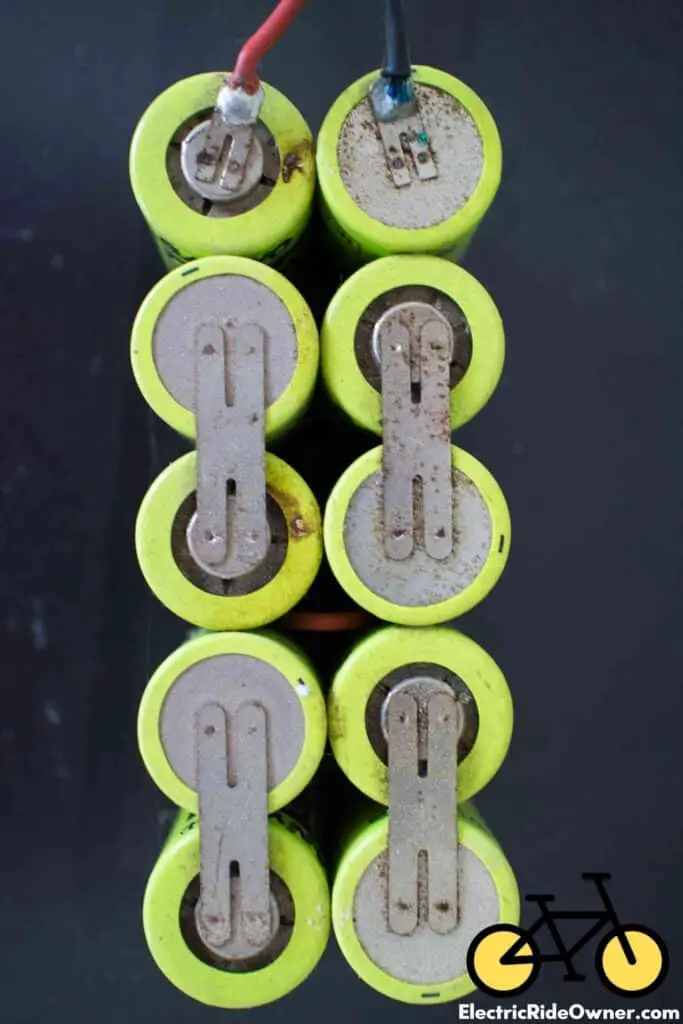
6. eBike Battery Gives Inconsistent Ride Times
In general, if your eBike battery provides you with inconsistent ride times it is most likely caused by a malfunction in the battery management system (BMS). It could be a faulty cell or group of cells in your battery causing your BMS to malfunction, a loose connection, or an issue with the BMS itself.
To troubleshoot what is causing your eBike to provide you with inconsistent ride times, we recommend cautiously opening up the battery to investigate three things:
- The connectors
- The battery cells
- The BMS
You are only opening the battery to look at its components; we do not recommend probing inside the battery unless you have a significant understanding of lithium-ion batteries and the safety procedures to take when handling them.
Faulty Battery Connectors Causing Inconsistent Ride Times
If you see any loose connections inside your battery, it is likely this is the root cause of your inconsistent ride times. You can take your eBike battery to a mechanic to have the bad connector(s) replaced if you are unfamiliar with the components of a lithium-ion battery.
If you feel confident you can replace them yourself, you can purchase connectors at any auto supply store. If you do not see any loose connections inside your battery, you can use a multimeter to assess the voltage of the individual cells.
Faulty Battery Cells Causing Inconsistent Ride Times
If you choose to use a multimeter to assess the voltage of the individual battery cells, make sure your battery is fully charged. If it is not, carefully put it back together to charge it. Do not charge your battery when its cells are exposed to avoid the risk of electrocution.
If your multimeter has given you an accurate reading for each of the individual battery cells, it is unlikely that the battery cells are causing you to have inconsistent ride times. If the multimeter shows that a battery cell has a lower voltage than it should, this cell could be damaged and should be replaced.
If you are familiar with lithium-ion batteries, you can replace this yourself as long as you take the necessary safety precautions. If you are unfamiliar with lithium-ion batteries, you can take your battery to a mechanic to have the faulty cell(s) replaced.

Faulty BMS Causing Inconsistent Ride Times
Given the connections and the individual battery cells in your battery look good but your trouble with inconsistent ride times persists, it is likely the root cause of your issue is a faulty battery management system (BMS).
We recommend taking your eBike battery to a mechanic if your BMS is faulty. You can have your BMS replaced, but only a professional should be handling this component of your electric bike’s battery. While many battery management systems can be replaced, sometimes they are beyond replacement and your entire battery may need to be replaced. This depends on how damaged your BMS is and if it has caused any other issues within the battery.
7. When Your eBike Shuts Off When Pressing The Throttle (Powering Motor)
As a whole, if your eBike shuts off when you press the throttle or attempt to power the motor, there is likely an issue with a connector or a battery cell. We highly recommend taking your eBike to a professional for this issue, as troubleshooting these areas can pose a risk of electrocution.
When your eBike shuts off after fully triggering the throttle, it is likely that your BMS detects an unsafe imbalance within your battery. This could mean that your motor is drawing more power than the battery can supply, the voltage inside the battery is imbalanced, or your battery is overheating.
We recommend opening your battery to check the connections inside. Do not probe inside the battery if you are unfamiliar with lithium-ion batteries or without taking the necessary safety precautions.
Simply look to see if all the connectors are in the right places and that they are all secured tightly. If something is loose or faulty, take it to a mechanic to be fixed or try fixing it yourself if you feel comfortable with lithium-ion batteries. You can find replacement connectors at any auto supply store.
If all your connectors look good, get your multimeter out to check the battery cells. With the multimeter, check to see if the voltage reading it gives matches the voltage at which each cell should be operating. If you have a faulty battery cell(s), you can replace them yourself if you feel comfortable with lithium-ion batteries, or have them replaced by a professional.
If both your connectors and your battery cells look good but your issue with your throttle causing your eBike to cut out persists, it is likely the root cause is a faulty battery management system (BMS). We recommend taking your eBike battery to a mechanic if your BMS is faulty.
You can have your BMS replaced, but only a professional should be handling this component of your electric bike’s battery. While many battery management systems can be replaced, sometimes they are beyond replacement and your entire battery may need to be replaced. This depends on how damaged your BMS is and if it has caused any other issues within the battery.
For more information on why your eBike may be cutting out, check out our article, “Why Does My Electric Bike Cut Out (Troubleshoot Master Guide).”

8. If Your eBike Battery Falsely Shows It Is Fully Charged
In total, if your battery falsely shows it is fully charged this is likely caused by an issue in the BMS or is indicative of an issue with the BMS itself. When troubleshooting issues in the BMS, it is best to seek out a professional, as taking apart a BMS can pose a significant risk of electrocution.
Your mechanic will either suggest replacing the BMS or your battery as a whole. If your battery is at least three years old, it is likely you are due for a replacement anyway. If your battery is under three years old, the mechanic may want to replace the BMS.
“If you think you’re low on energy—RECHARGE!”
-Electric Ride Owner
How Do I Know If My eBike Battery Is Bad?
As a general rule, if your eBike is not holding a charge, cutting out, or swelling, it is likely a bad battery. You can troubleshoot these issues as they may be caused by a bad BMS or battery cell, but it is likely you have a bad battery. If your battery is over three years old it is also probable that it is a bad eBike battery.
The main indicators that your eBike battery is bad are if it is not holding a charge or if it is overheating. These issues usually occur when a battery is at the end of its lifespan. It is normal for an eBike battery to feel warm to the touch when it is plugged into its charger or in your eBike, but if it is too hot to touch, something is wrong.
If you have been using your battery for at least three years or about 1000 charge cycles, it is probably time to replace your eBike battery. If you find that your battery does not charge fully anymore, or if it does not take you as far on a full charge as it used to, these are also signs that your eBike battery is bad and should be replaced.
For more information about eBike battery lifespans, check out our article, “How Long an Electric Bike Battery Last [Lifespan, Per Charge].”
How Do I Reset My eBike Battery?
On average, you can reset an eBike battery by dismounting it from your eBike (if possible) and holding the On/Off button(s) down for at least ten seconds. This method works for most batteries, but you should consult your owner’s manual or your eBike’s manufacturer’s website for specific instructions.
If you have any issues with your battery, you should first try resetting it. Just like your smartphone or computer, the first troubleshooting procedure when trying to assess an eBike battery is resetting it. To do this you should dismount it, if possible, and hold down the on/off button(s) for at least 10 seconds, or until you see the LED power light respond to this procedure.
Resetting the battery can rule out any simple battery malfunctions, like the battery falling into sleep mode. Check your owner’s manual for specific instructions on how to reset your battery, as these are the instructions for a Bosch PowerPack battery.
If resetting your battery does not solve your issue, it may be a good idea to reset your BMS. We do not recommend doing this yourself, but if you take it to a mechanic they would be happy to do this small procedure for you. This will help you rule out any minor malfunctions in your BMS and guide your troubleshooting process.
How Do I Test the Battery on My E-bike?
In general, you can test the battery on your e-bike by using a multimeter. When a multimeter is connected to your eBike battery, you can test your battery’s capacity, resistance, and voltage. Checking these functions is critical when troubleshooting any issues with your eBike’s battery.
Before using a multimeter, make sure your eBike battery is fully charged. If you use a multimeter to get a reading on an eBike battery that is not fully charged, the reading will not be accurate.
You can use a multimeter by first removing your eBike battery from your eBike, or locating the charging port on your battery if it cannot be dismounted from your eBike. Your multimeter will have a positive and a negative probe (red=positive, black=negative) to attach to the positive and negative ports in your battery. Then, set your multimeter to the appropriate voltage range that coincides with the voltage listed on your battery. Then, take your reading.
We recommend purchasing this Plusivo multimeter from Amazon. Once attached to your eBike’s battery, if your multimeter reads the same voltage as is noted on your battery, it is unlikely your battery is the root of your issue. If the voltage reading is lower than what is noted on your battery, you may have a faulty battery.
You can also use a multimeter to read the current or resistance of your battery. The reading for the battery current will tell you the battery’s capacity. The resistance will tell you the rate at which electricity flows in your electric bike’s battery. If your eBike battery has a low resistance, that means the electricity flows quickly and with little resistance.
How Long Do Batteries for eBikes Last?
On average, eBike batteries last for 25-70 miles per charge or three to five years in total. When an eBike battery is around three years old or has gone through 1000 charge cycles, it gradually stops performing at its peak condition.
You will start to notice your eBike battery is in need of replacing when it stops charging to its full capacity or overheats often.
Most eBike riders will replace their battery once or twice while owning their eBike. This will depend on how often you ride your eBike, the conditions under which you ride your eBike, and how you store your eBike and its battery. If you do not store your eBike or its battery properly, you may have to replace it sooner than three years into use.
For more information on how to properly store your eBike and its battery to maximize its lifespan, check out our article “17 Electric Bike Storage Ideas You Can Actually Use (Home, Garage, Outside).”
How Do I Fix My eBike Battery That Is Not Charging?
As a general rule, you can fix your eBike battery that is not charging by replacing its charger or the battery itself. When an eBike battery stops charging, it is either because the charger is faulty, or because the battery is at the end of its lifespan and needs to be replaced.
To troubleshoot what is causing your eBike battery not to charge, you should purchase a multimeter. With a multimeter, you can first check your charger to see if that is causing your issue. Refer to the section titled “How Do I Test the Battery On My Ebike” for details on how to use a multimeter.
If your charger is causing your eBike battery to not charge, we recommend replacing your charger. This will be a cheaper fix than attempting to fix your charger. If your charger provides an accurate reading on the multimeter, you should check your battery with the multimeter.
If your battery provides a reading that shows a different voltage than what is stated on the battery itself, then you know you have an issue with the battery. You should now take your battery to a mechanic so they can test the cells and the BMS. These components of your battery could be causing your battery not to charge and are far less expensive to replace than the battery itself.
If you want to learn more about the lifespan of electric bike batteries, check out our published article, “How Long an Electric Bike Battery Last [Lifespan, Per Charge].”


